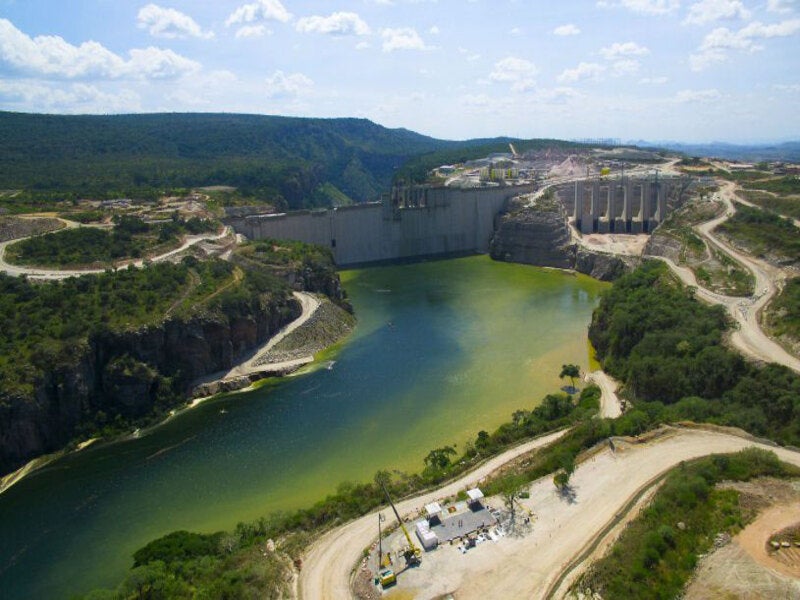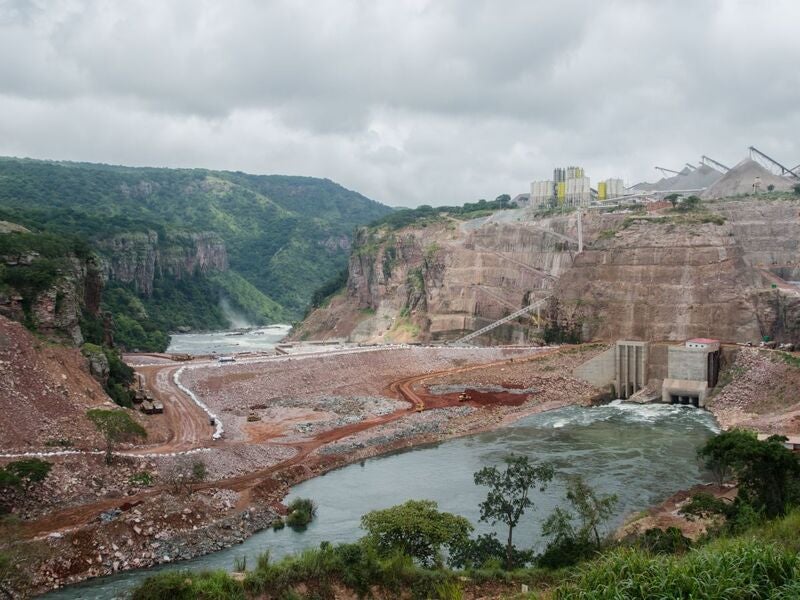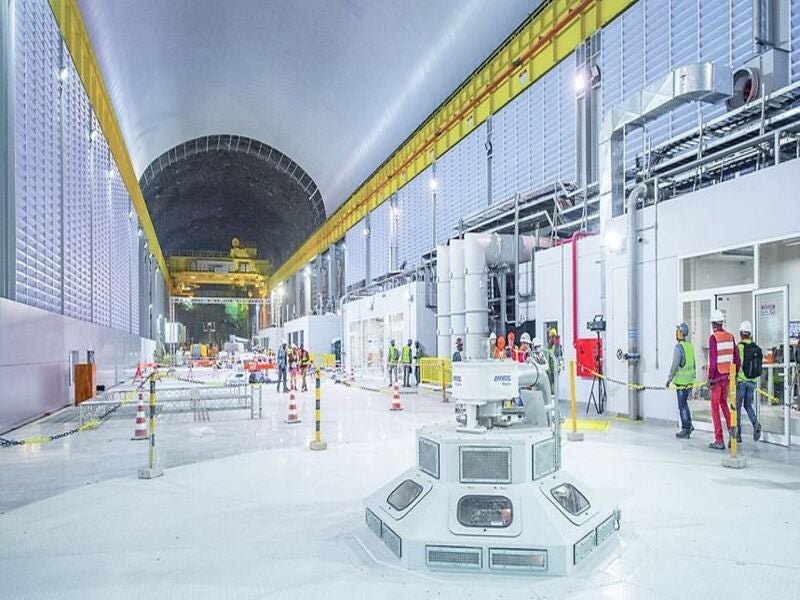The Laúca hydroelectric power station is a 2GW run-of-the-river hydroelectric project located on the Kwanza River in Angola. It is currently the second biggest hydroelectric power facility in operation in Africa, after the 2,075MW Cahora Bassa power station in Mozambique.
Gabinete de Aproveitamento do Médio Kwanza (GAMEK), an enterprise of Angola’s Ministry of Water and Energy, developed the project with an estimated investment of £2.74bn ($4.3bn).
The main construction works on the hydroelectric plant were started in July 2013. While the first unit was commissioned in July 2017, the sixth main unit of was put into operation bringing the total installed capacity to 2,004MW in December 2020.
An environmental flow power plant of 65.5MW capacity is also currently under construction at the site, and upon its completion, the Laúca hydroelectric plant’s total capacity will reach approximately 2,070MW.
At full capacity, the Laúca hydroelectric power station is expected to generate approximately 8640GWh of electricity a year.
Location and site details
The Laúca hydroelectric power station is located in Dombo-Ya-Pepe between the provinces of Kwanze Norte and Malanje in Angola.
The project site lies in the middle section of Kwanza River, approximately 47km downstream of the Capanda hydropower plant and 282km away from the capital city Luanda.
Laúca hydroelectric power station make-up
The Laúca hydroelectric facility comprises six vertical axis Francis turbines of 334MW capacity each. The turbine units are installed in an underground powerhouse measuring 273m-long and 21m-wide. The turbines operate at a net head of 200m with a nominal flow rate of 182m3/s.
The power station also includes the construction of an ecological power plant of 65.5MW capacity, at the bottom of the dam. It will consist of a single vertical axis Francis turbine unit operating with a nominal flow rate of 60m3/s, and at a net head of 128m.
Dam and water conveying system
The Laúca hydroelectric power project involves a 132m-high roller compacted concrete (RCC) dam with a crest length of approximately 1,075m. The dam is designed to create a reservoir capacity of 5482 million cubic metres (mcm), while the spillway design flow rate is 10,020m3/s.
The water conveying system comprises six water intakes and six wells with an inner diameter of 7m.
Power evacuation
The electricity generated by the Laúca hydroelectric power station is evacuated through a 400kV power transmission line.
The project also encompasses the construction of a 220kV ancillary substation for power evacuation from the ecological hydropower plant.
Financing
The Laúca hydroelectric power plant facility was financed through £175.89m ($246m) loan from the Standard Chartered Bank and approximately £107.25m ($150m) from Gemcorp Capital.
The project was also partially funded by Deutsche Bank, along with funding of £774.63m ($1.2bn) by nine international banks with an export credit cover from Euler Hermes and CESCE.
Contractors involved
Andritz Hydro was contracted for the supply, installation, and commissioning of the turbine generator equipment in 2014.
Odebrecht Infrastructure signed a contract worth £529.23m ($797m) for the construction of power transmission lines as part of the hydroelectric project in November 2015.
Odebrecht Engineering and Construction (OEC) (now Novonor) signed a contract with the Ministry of Energy and Water of Angola for the construction works of the Laúca hydroelectric power station in July 2012.
Intertechne Consultants and Associates was subcontracted by Odebrecht Engineering and Construction for the design and operation of the hydroelectric power plant.
Elecnor was engaged for the electro-mechanical assembly works, while Lahmeyer International was engaged by Angola’s Ministry of Energy and Water Resources for the EPC Consultancy services of the project.
SRK Consulting was appointed for the preparation of environmental and social due diligence report to support the financing of the project.
COBA Consultants was engaged for technical assistance, construction supervision, and design review of the hydroelectric project, while Efacec Power Solutions supplied and installed the split-phase power transformers for the power plant.
GEG was contracted for the geotechnical site investigation services for the project, and PRODEL-EP has been engaged for the operation and maintenance of the hydropower station.





